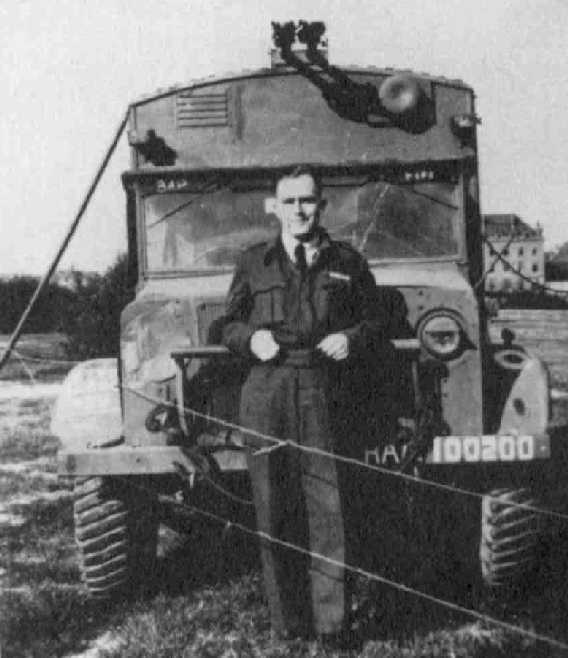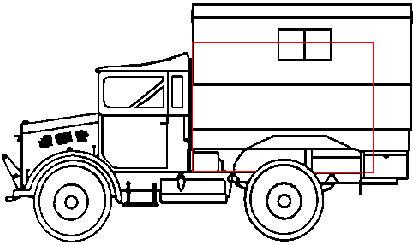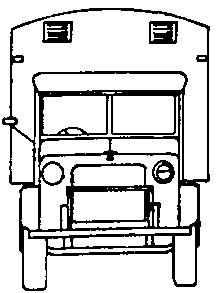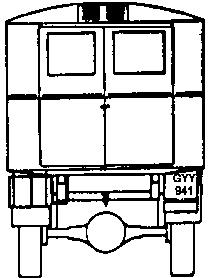
Summer of 44
1944 Bedford MWV, 15 cwt, 4 x 2, Wireless, Royal Air Force
All Vehicles are available for Film and Television Hire
Copyright ï¿?2000, All rights Reserved. Summer of 44 Living History Group.

Bedford MWV, France 1944
|
The 15cwt Truck
was the most common vehicle use by the British Services during WW2 with
over 250,000 variants being built, approximately 70,000 of them being
Bedford MW's:
|
| MW Types: | |
| MWD | General Service (GS) body, a wooden dropside box with a canvas hooped cover. |
| MWR | Radio Body, Similar to the GS body, but specially modified for radio use. |
| MWC | Special Purpose bodies, Commonly the 200 gallon Water Bowser, and the 20mm Anti-Aircraft Gun Carrier. |
| MWX | A full scale Inflatable Dunlop Rubber Decoy MWD GS version |
| MWV | RAF Adaptation of the MWR with purpose built body and spare wheel slung under chassis. |

| An RAF adaptation of the MWR was the MWV, using an enclosed Van type Radio Body, the Type "E" Insulated Wireless Shell, also known as the Type "E" Signals Body. The Type "E" had different versions in its own right, subtypes Signals No 107, 108, 314, 315 and 316. A feature of all Bedford MW based RAF Signals Vehicles is their excessive rear overhang. The drawing above compares the rear body areas of the Army MWR (Red Line) and the RAF's MWV, (Black lines). |
| One difference between Signals subtypes was the style of Wheel Arch, there being 3 distinct patterns. These are the Circular Rear Wheel Arch designed specifically for the MW, the Flat Floored body with NO Wheel Arch designed Post WW2, and the Angular Rear Wheel Arch. The elongated Angular pattern was generically designed to fit on any 15-cwt in RAF service, hence the rather odd appearance. The only other 15cwt trucks employed by the RAF during WW2 were the Commer Q2 and Q15 and the Canadian Military Pattern Ford F15. |
 |
| The Type "E" MW remained in service with the RAF until the mid 1950's, when the majority were used as range targets and destroyed, a few escaping to the see service with the Post Office and the Dutch Airforce. This particular example having served with the Post Office. |
 |
The Type "E"
has a timber framework, the sides, ends, and rear doors are externally
panelled with aluminium and lined with hardboard. The external roof
is sheet steel. The gap between the inner lining and the outer panels
is filled with temperature insulating materials. Sliding windows are
found in the sides, with louvered ventilation panels front and rear.
All windows are fitted with Blackout shutters on the inside. "E"
Types were not issued with any service equipment; user units fitted
the required transmitting/receiving sets and associated equipment. Radio
masts were stored inside the body on this particular vehicle. The Gap
between the rear of the cab and body is to accommodate Radio masts when
erected.
|
|
The primary role for the Type "E" was as an Air Traffic Control Tower on Advanced Landing Grounds during the Allied invasion of Normandy and subsequent liberation of Europe. A secondary role was with advance units co-ordinating air support. Unconfirmed rumours suggest that "E" Type MW's were amongst some of the first British vehicles to be seen in Paris when the city was liberated in August 1944. |
|
Engine: Bedford 6-Cylinder
3.5 Litre Capacity |